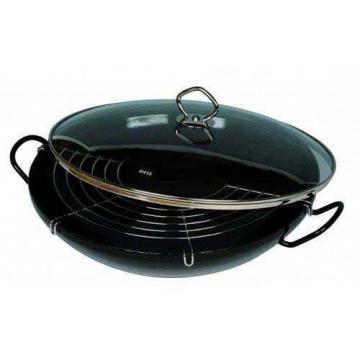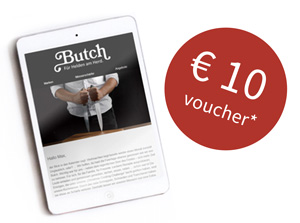
Woks & Wok Pans
What is a Wok?
A wok is a traditional, multifunctional cooking utensil primarily used in East Asian cuisine. According to tradition, it is said to have originated from southern China, but by now, the wok is found all over the world. A classic wok is understood to be a metal vessel with high sides and a round bottom, or – in other words – a high, continuously curved round pan. In its original form, there is no distinction between the bottom and the sides. The wok is more like a hemispherical, round bowl.
What is the difference between a wok and a wok pan?
To make the original wok suitable for Western households, the wok pan was created, which has a flattened bottom so that it can also be used on electric stoves with hot plates or glass ceramic hobs. As you can see, there is technically a formal difference between a wok and a wok pan. Our manufacturers usually use the common and shorter term "wok" as the article designation for their products, and we have adopted this in the Butch Shop.
What is wok hei?
In the countries of origin, the wok is traditionally used on open fire, special gas burners, or electric cookers. The completely round shape makes sense here, as the wok does not need a flat base on these special heat sources. These also develop greater power than a Western stove. However, the characteristic aroma, known as "wok hei," can only be achieved with high heat, if you will. It describes a very unique taste that is described as intense, highly aromatic, and slightly smoky. The experts among us know that the so-called Maillard reaction is responsible for this from a chemical point of view, which provides the typical roasted aromas. Since our Western stoves are not designed to provide this high power, original Asian dishes will not taste exactly like they do in their home country or in an Asian restaurant. But honestly, we believe that this does not detract from the joy of using a good wok pan, and you can conjure up extremely delicious creations with it. And with a little practice in handling one of our woks, you will also be able to achieve a more than satisfactory approximation of the wok hei aroma.
What is meant by "stir-frying"?
Stir-frying is the method of preparing food in a wok. The ingredients are constantly moved back and forth in the wok, and the pan itself is also in motion, shaken and the contents are tossed. The chopped ingredients can be evenly fried at high temperature within a short time. The placement of the ingredients in the wok - in the middle or on the outer edge - as well as the correct order are important. The ingredients with the longest cooking time, such as meat cubes, are added first, followed by vegetables, and finally seafood such as shrimp. When stir-frying, you push the delicate pieces to the cooler outer edge.









